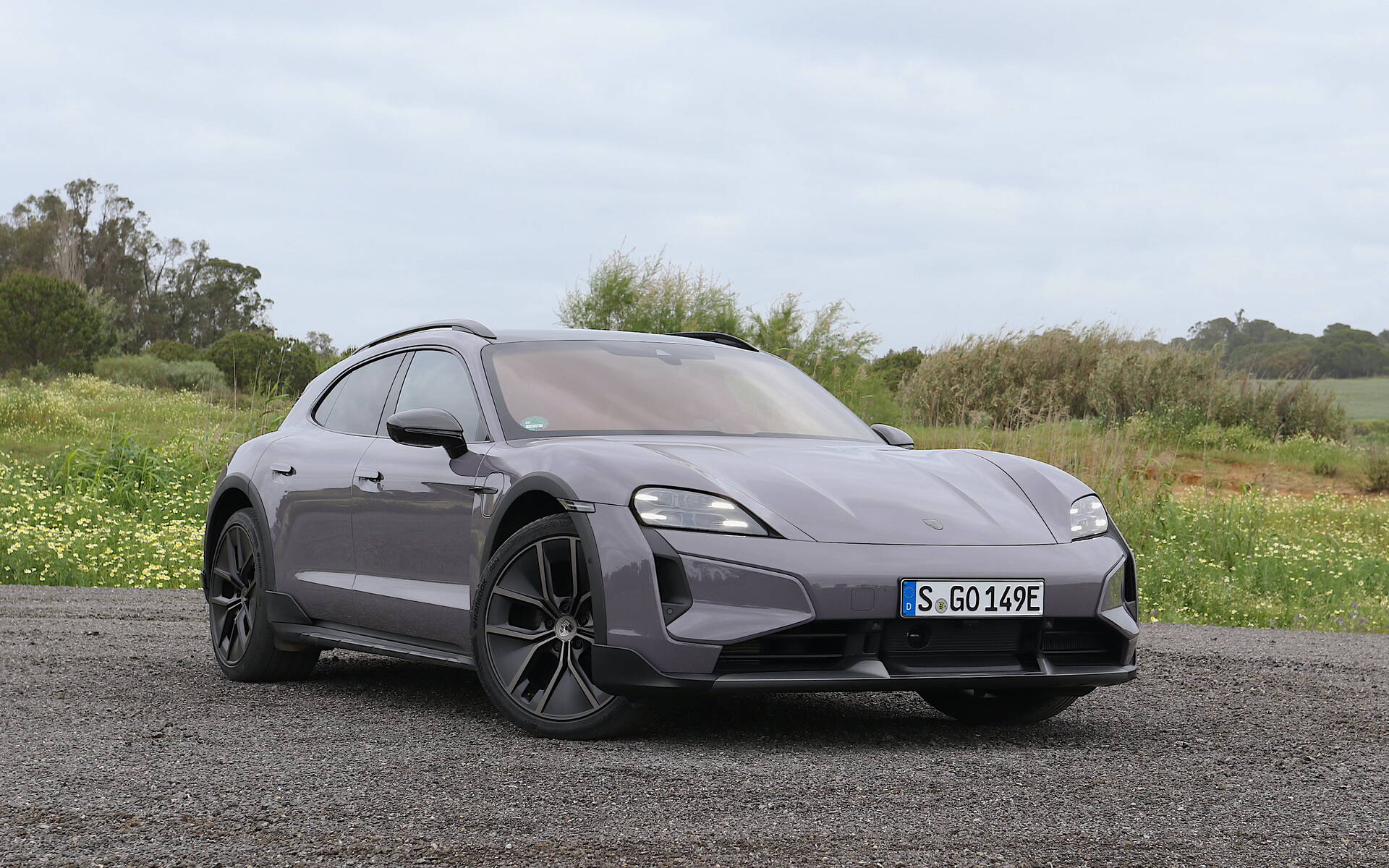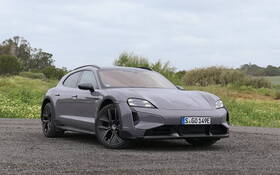2025 Porsche Taycan: Faster, Stronger, Farther

| Strong points |
|
|---|---|
| Weak points |
|
Sevilla, Spain—Five years after the launch of the Taycan, with nearly 150,000 units sold globally, Porsche is giving its highly successful electric sports sedan a first major update.
For 2025, styling is revised but not that different from the outgoing Taycan. The main changes can be found in the headlights and bumpers, with the Turbo and Turbo S models getting distinctive treatments. New body colours are available, too, along with a Turbonite finish for the badges, rocker panels and more.
- Also: 2025 Porsche Taycan Turbo GT Officially Unveiled With Over 1,000 Horsepower
- Also: 2025 Porsche Taycan, Vision Gran Turismo Concept Star in Toronto

Inside, the updated cockpit features three displays including one facing the passenger for streaming content (it remains invisible from the driver’s point of view in order to avoid distractions. The big news is Apple CarPlay+, an advanced interface allowing direct control of the car’s HVAC system, audio and more.
Taycans equipped with the Performance Plus battery and/or the Sport Chrono package get a new Push-to-Pass function that boosts power for 10 seconds.

In typical Porsche fashion, the interior is superbly executed and finished with high-quality materials. Four adults can sit comfortably, although headroom is more limited in the rear. In Turismo (wagon) configuration, access to the trunk is larger and easier thanks to the liftgate.
Most of the controls are logically arranged, but we hate to have to go through a touchscreen for basic, everyday tasks like adjusting cabin temperature or ventilation and activating the heated seats.

Faster and More Powerful
Two batteries are available with the 2025 Porsche Taycan. The first one has a capacity of 93.4 kWh, while the second is rated at 105 kWh. DC fast charging is now possible at up to 320 kW instead of 270 kW, so you can go from 10-80 percent in as little as 18 minutes. The EPA-estimated range figures are not out yet, but for what it’s worth, the WLTP puts the Taycan Turbo S at 630 km on a single charge.
Output is increased quite a bit. For 2025, the Taycan 4S generates 536 horsepower with the standard battery or 590 horsepower with the Performance Plus battery. Peak torque amounts to 512 lb-ft and 523 lb-ft, respectively.
The Taycan Turbo supplies a whopping 871 horsepower and 683 lb-ft of torque, but the Turbo S is even more explosive with up to 938 horsepower and 818 lb-ft of torque when Launch Control is turned on. How about 0-100 km/h sprints in 2.4 seconds?

Behind the Wheel
In Spain, we had the opportunity to test drive two different Taycan models including a four-door Turbo and a five-door Turbo S Sport Turismo. Both featured the optional Porsche Active Ride suspension that makes access easier by lifting the car upon entry.
The first thing that impressed us was the smooth ride and silent operation at low speeds. Acceleration is spirited to say the least. On the flip side, road noise becomes audible at higher speeds and on rougher pavement. The wide tires (245 mm front, 285 mm rear) obviously play a role, here.
When traffic starts to lighten up, depressing the throttle a mere 20 percent is enough to fly past about 90 percent of the vehicles that surround you. In Sport Plus mode, reaching illegal speeds is shockingly quick. The way that power is put to the ground with poise and control is even more amazing, mind you. Except for the rear end squirming a bit from takeoff, the Taycan Turbo S surges forward with no hesitation whatsoever.

On twisty roads, the big German EV manages to handle like a much lighter car despite tipping the scales at more than 2,300 kg. It proves surprisingly athletic and agile, with highly precise and responsive steering combined with great braking power.
After driving for around 150 km, we recorded an average of 20.7 kWh/100 km, which is fairly low energy consumption considering the various sprints we did. As mentioned earlier, the EPA ratings have yet to be released, but since the battery has a capacity of 105 kWh, driving for approximately 500 km would have been possible with both the Turbo and Turbo S models.

Seriously Expensive Options
When it comes to pricing, the 2025 Porsche Taycan 4S starts at $135,600, the Taycan Turbo comes next at $196,800 and the Taycan Turbo S tops the line at $236,100. No reason to cry foul given the badge on the front of the car, but once again we need to warn you about those expensive options. Our Turbo tester actually cost $285,000 including freight, PDI and the luxury tax. The Turbo S? Over $328,000. All three models will go on sale this summer, if you’re interested.
Ultimately, the updated 2025 Taycan impresses with energetic or electrifying acceleration (depending on the model), a lovely interior offering new state-of-the-art tech, as well as unsurpassed driving dynamics. The only question mark remaining is the exact range for each Taycan.











